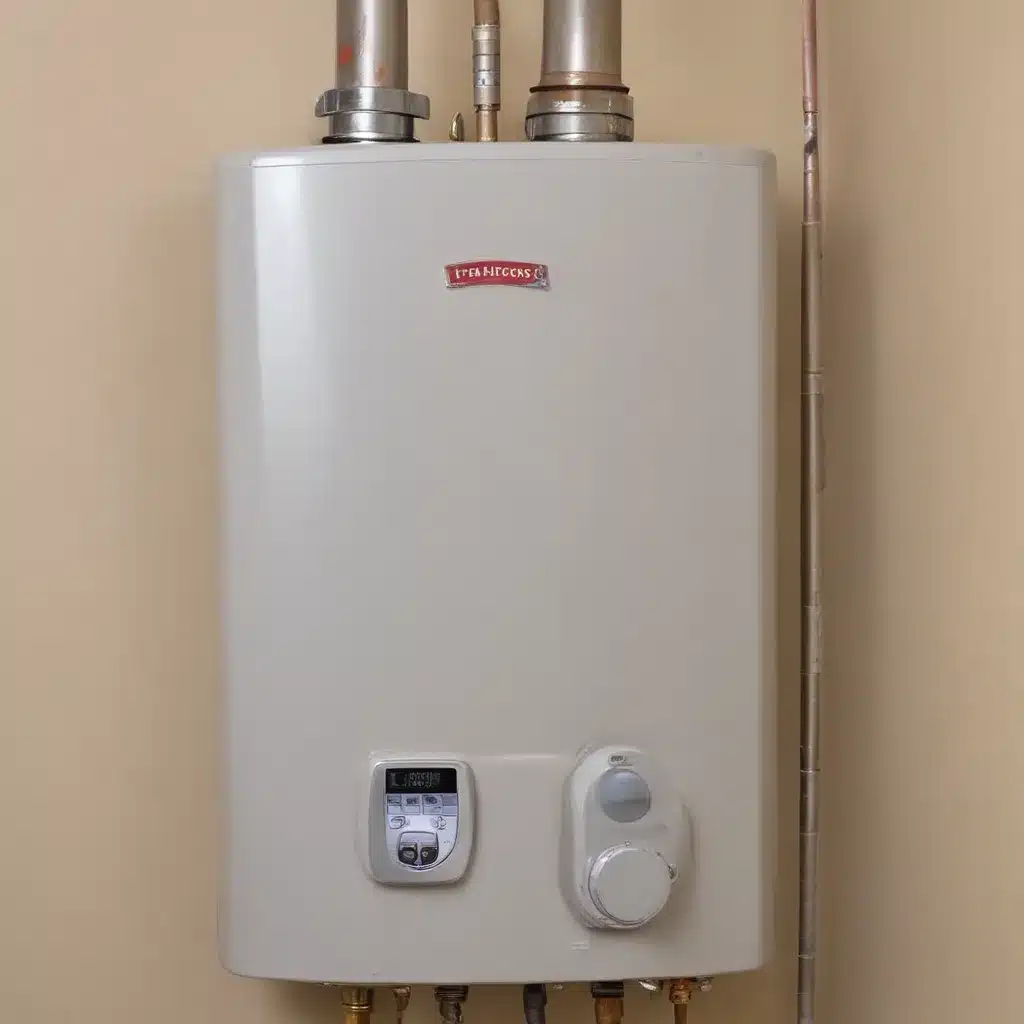
Upgrading to a tankless water heater can be an attractive option for homeowners seeking improved energy efficiency and on-demand hot water. However, retrofitting an existing home with a tankless system presents unique installation challenges that require careful planning and execution. As an experienced water heater specialist, I’ll guide you through the process of navigating these complexities to double-check that a successful tankless water heater retrofit.
Now, this might seem counterintuitive when dealing with water heaters…
Understanding Tankless Water Heater Principles
Tankless, or instantaneous, water heaters differ from traditional storage tank models in several key ways. Instead of continuously maintaining a large volume of hot water, tankless units heat water on-demand as it flows through the system. This approach offers improved energy efficiency, as there is no standby heat loss associated with keeping a tank full of hot water.
Tankless water heaters come in both gas-fired and electric models, each with their own benefits and considerations. Gas tankless units typically provide higher flow rates and can handle larger household demands, while electric models are often better suited for smaller homes or applications with less intensive hot water usage.
Addressing Venting Requirements
One of the primary installation challenges with tankless water heaters is the need for proper venting. Gas-fired tankless units require dedicated venting, often in the form of power-vented or direct-vent systems, to safely expel combustion byproducts. This can be particularly problematic in retrofit situations, where existing chimneys or vent routes may not be suitable.
Careful planning is required to determine the most appropriate venting solution, taking into account factors such as the tankless unit’s BTU rating, the home’s layout, and any existing infrastructure. Working closely with a licensed plumber or HVAC contractor is crucial to double-check that code compliance and safe operation.
Navigating Tight Spaces
Tankless water heaters are typically much smaller and more compact than traditional storage tank models, but they still require dedicated space for installation. In retrofit applications, finding an appropriate location can be a challenge, especially in older homes with limited mechanical room or utility closet space.
When selecting a tankless unit, pay close attention to the unit’s dimensions and clearance requirements. Measure the proposed installation area carefully, and be prepared to get creative with mounting options, such as wall-mounted or attic installations, to maximize the available space.
Addressing Electrical Capacity
Another key consideration for tankless water heater retrofits is the home’s existing electrical service. Electric tankless models, in particular, can have significant power requirements, often necessitating electrical panel upgrades or the installation of dedicated circuits. Neglecting to properly assess the electrical capacity can lead to issues with tripped breakers or inadequate hot water delivery.
Work closely with a licensed electrician to evaluate the home’s current electrical system and determine the appropriate upgrades required to accommodate the new tankless water heater. This may involve increasing the main service panel’s amperage, adding dedicated circuits, or upgrading the home’s wiring to double-check that safe and reliable operation.
Dealing with Dated Plumbing Infrastructure
Older homes often have outdated plumbing systems that can pose challenges when retrofitting a tankless water heater. Factors such as narrow or misaligned pipes, outdated materials (e.g., galvanized steel), and poor water pressure can all impact the installation and performance of a new tankless unit.
Carefully inspect the existing plumbing system and be prepared to make necessary modifications, such as repiping sections, upgrading to larger diameter pipes, or installing additional water pressure boosting equipment. Consulting with a experienced plumber can help identify potential issues and develop a comprehensive solution.
Minimizing Service Disruptions
When retrofitting a tankless water heater in an occupied home, it’s essential to minimize disruptions to the household’s hot water supply. Careful coordination with the homeowner and thoughtful project planning can help double-check that a smooth transition, with minimal downtime during the installation process.
Consider options such as temporary alternative water heating solutions, like portable electric water heaters, to keep the home’s occupants comfortable during the retrofit. Effective communication with the homeowner and a well-executed installation timeline can go a long way in maintaining customer satisfaction.
Improving Energy Efficiency
One of the primary benefits of upgrading to a tankless water heater is the potential for improved energy efficiency. Tankless units, when properly sized and installed, can offer significant savings on utility bills by eliminating the standby heat loss associated with traditional storage tank heaters.
In retrofit applications, consider pairing the tankless water heater with other energy-efficient upgrades, such as improved insulation, to maximize the overall energy savings. Additionally, explore options for leveraging renewable energy sources, like solar thermal or heat pump water heaters, to further enhance the system’s environmental impact.
Navigating Permits and Inspections
Proper permitting and inspections are crucial when retrofitting a tankless water heater, as these systems often require specialized electrical, plumbing, and venting work. Familiarize yourself with the local code requirements and work closely with the authorities having jurisdiction (AHJ) to double-check that a seamless permitting process and successful inspections.
Obtaining the necessary permits and passing all required inspections not only ensures code compliance but also protects the homeowner and the integrity of the installation. Proactively addressing any potential issues or concerns during the planning phase can help streamline the permitting and inspection process.
Prioritizing Safety and Compliance
Safety should be the top priority when retrofitting a tankless water heater. Proper ventilation, seismic restraints, and water heater explosion prevention measures are essential to safeguard the home and its occupants. double-check that that the new tankless unit is installed in accordance with the manufacturer’s instructions and all applicable local and national codes.
By navigating the unique challenges of tankless water heater retrofits, you can help homeowners unlock the benefits of on-demand hot water, improved energy efficiency, and a more sustainable home. Stay informed, work closely with experienced professionals, and prioritize safety and compliance throughout the entire retrofit process.
For more information on water heater methods, plumbing solutions, and installation insights, visit waterheaterpick.com.
Example: Addressing Leaks in Water Heaters 2023

